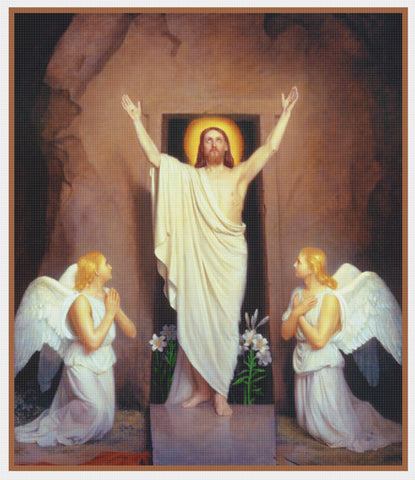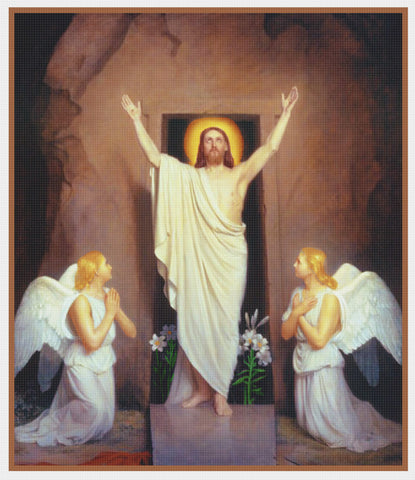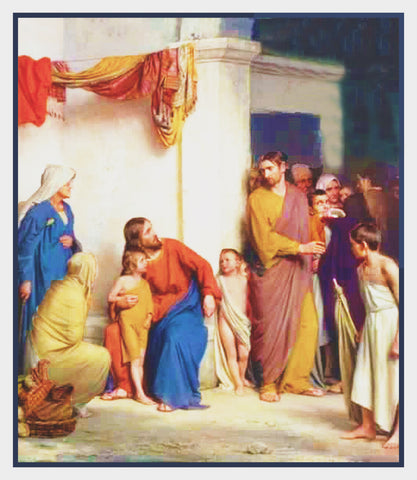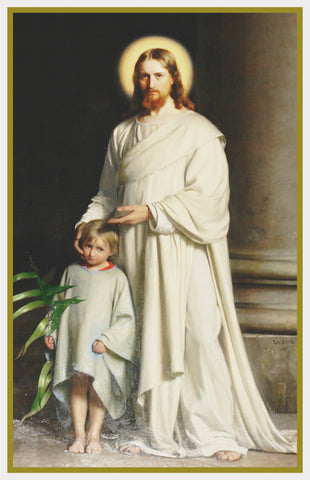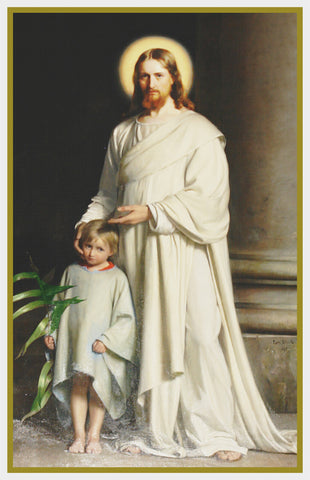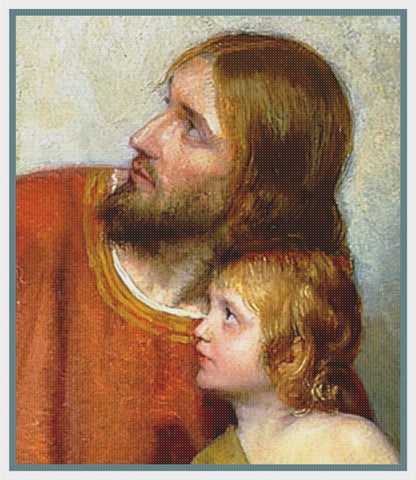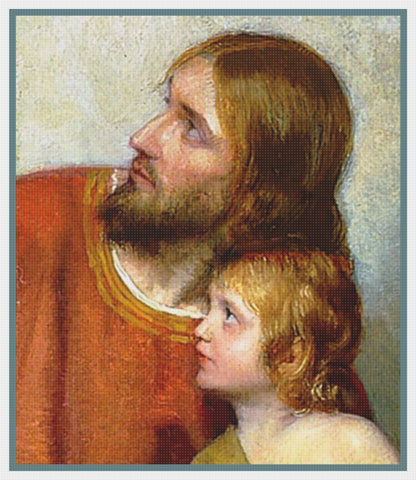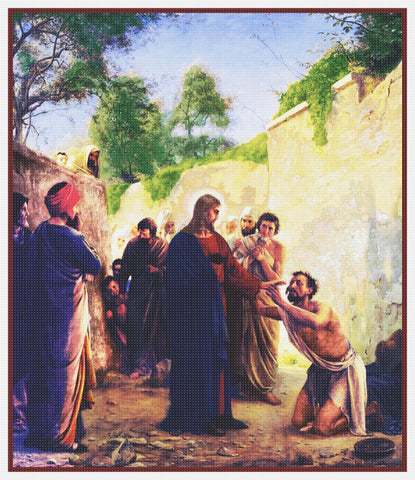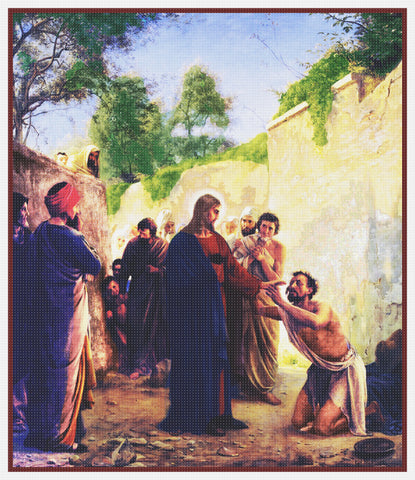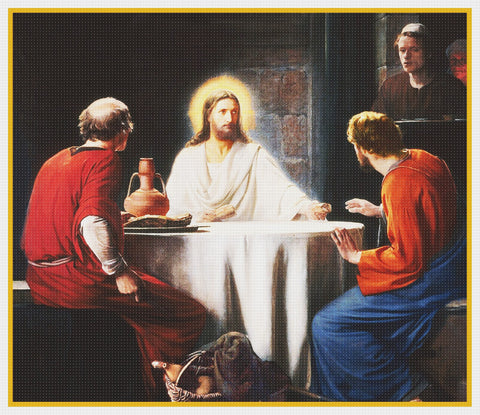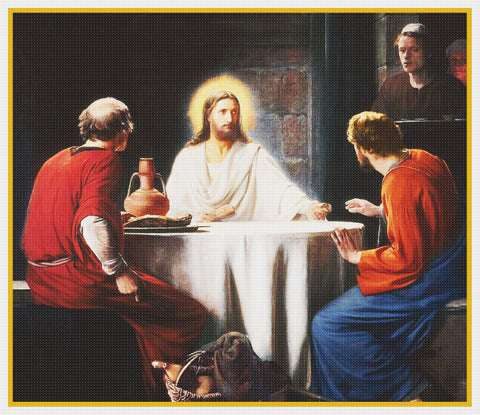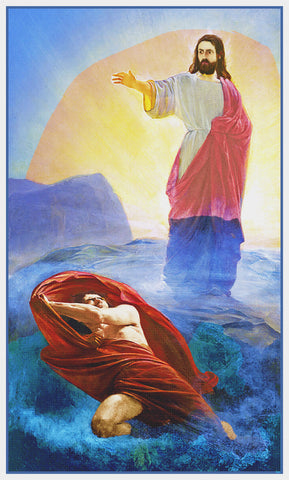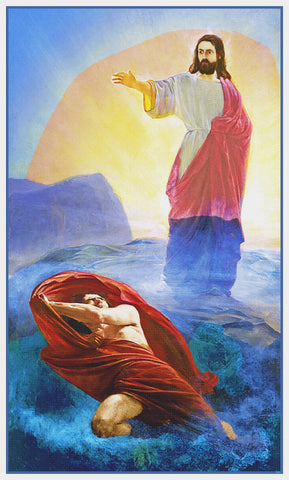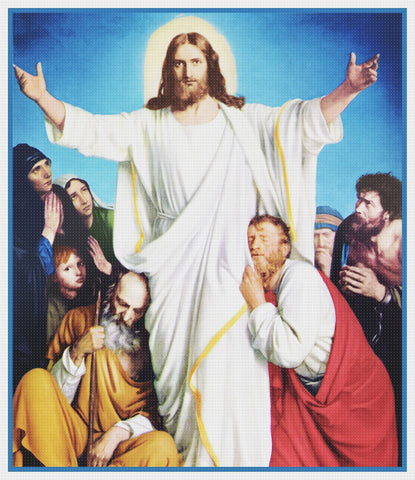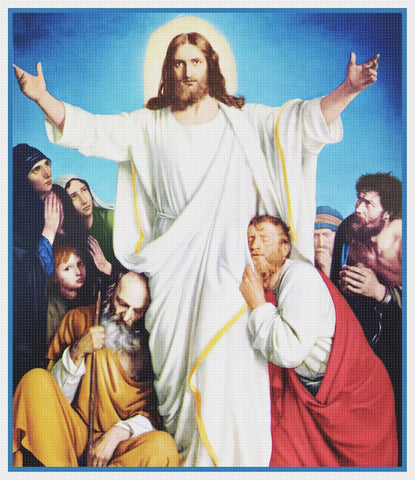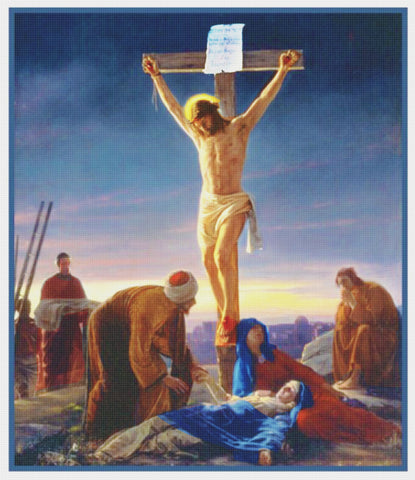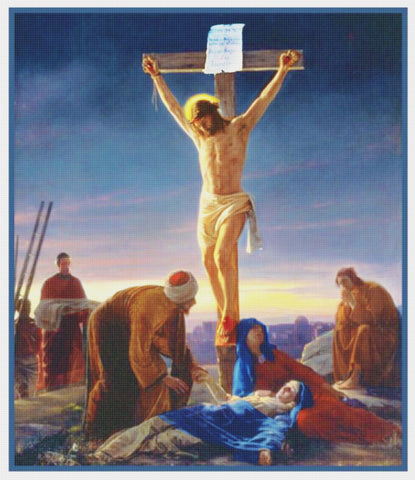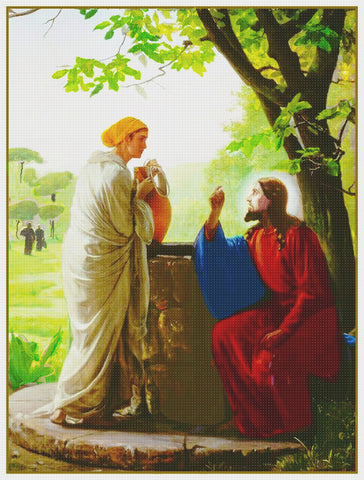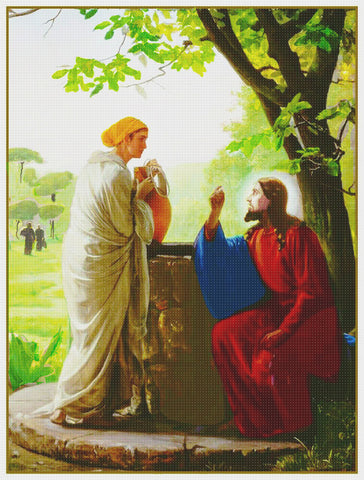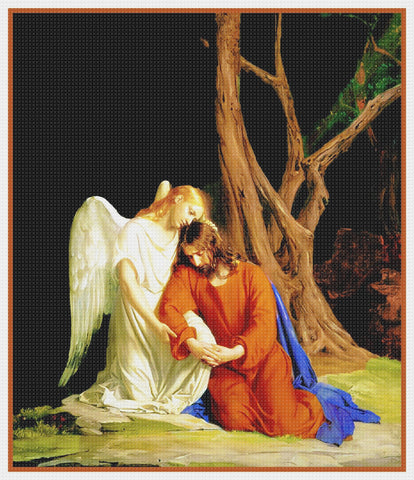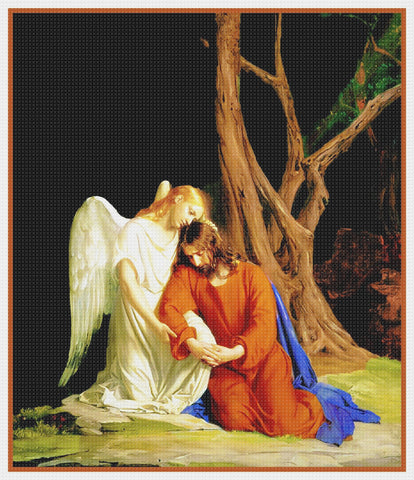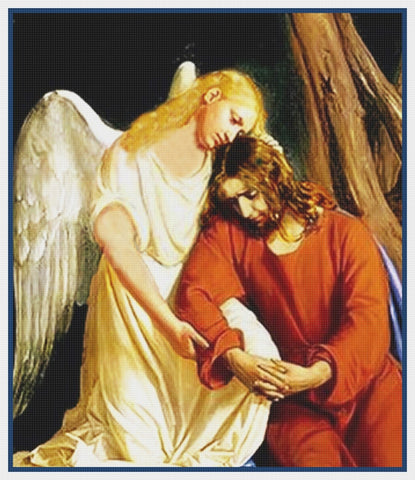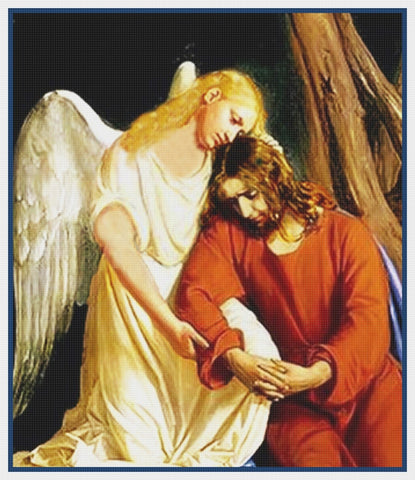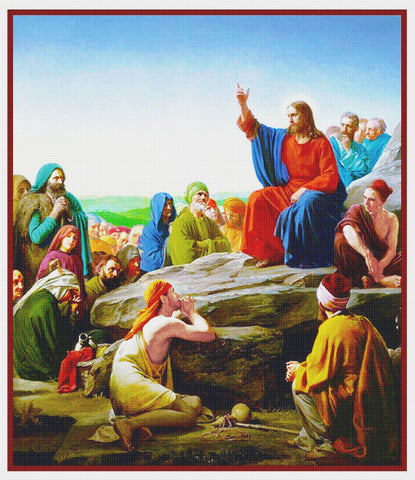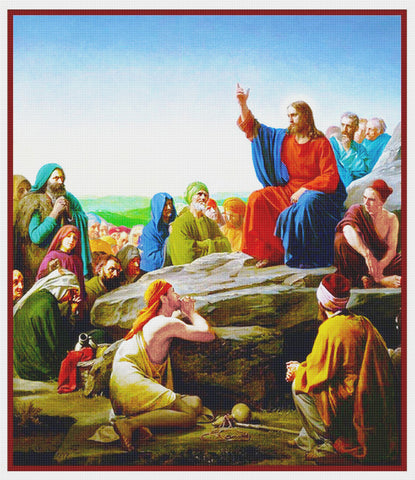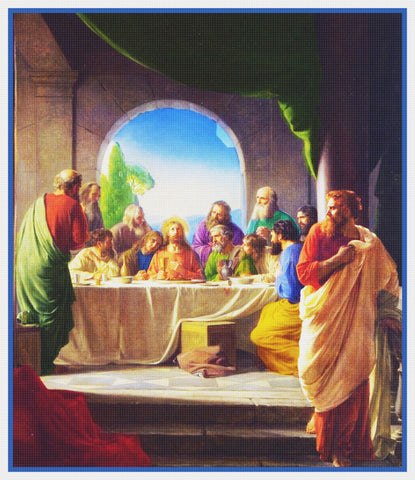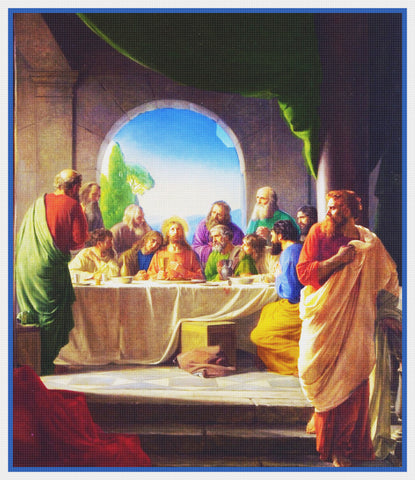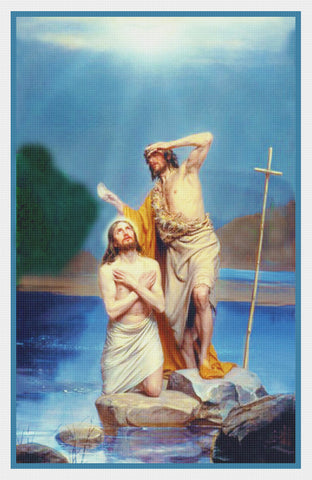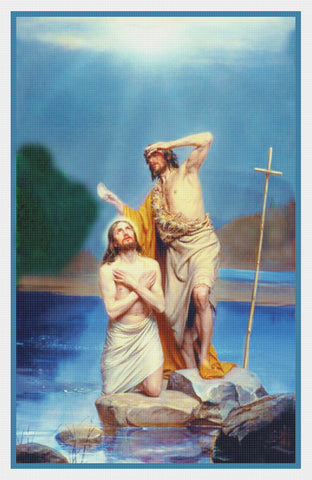Orenco Originals for the Artful Needleworker !
CARL HEINRICH BLOCH INSPIRED Counted Cross Stitch Charts Patterns

Enjoy our Counted Cross Stitch Charts- Patterns inspired by the works of Carl Heinrich Bloch.

Carl Heinrich Bloch, 1834 – 1890, was a Danish painter. He was born in Copenhagen, Denmark and studied there at the Royal Danish Academy of Art (Det Kongelige Danske Kunstakademi) under Wilhelm Marstrand . Bloch's parents wanted their son to enter a respectable profession - an officer in the Navy. This, however, was not what Carl wanted. His only interest was drawing and painting, and he was consumed by the idea of becoming an artist. He went to Italy to study art, passing through the Netherlands, where he became acquainted with the work of Rembrandt, which became a major influence on him. Carl Bloch met his wife, Alma Trepka, in Rome, where he married her on 31 May 1868. They were happily married until her early death in 1886.
His early work featured rural scenes from everyday life. From 1859 to 1866, Bloch lived in Italy, and this period was important for the development of his historical style.
His first great success was the exhibition of his "Prometheus Unbound" in Copenhagen in 1865. After the death of Marstrand, he finished the decoration of the ceremonial hall at the University of Copenhagen. The sorrow over losing his wife weighed heavily on Bloch, and being left alone with their eight children after her death was very difficult for him.
In a final ode, from a famous author to a famous artist, H.C. Andersen said "Write on the canvas; write your seal on immortality. Then you will become noble here on earth."
He was then commissioned to produce 23 paintings for the King's Chapel at Frederiksborg Palace. These were all scenes from the life of Christ which have become very popular as illustrations. The originals, painted between 1865 and 1879, are still at Frederiksborg Palace. The altarpieces can be found at Holbaek, Odense, Ugerloese and Copenhagen in Denmark, as well as Loederup, Hoerup, and Landskrona in Sweden.
Carl Bloch died of cancer on 22 February 1890. His death came as "an abrupt blow for Nordic art" according to an article by Sophus Michaelis. Michaelis stated that "Denmark has lost the artist that indisputably was the greatest among the living." Kyhn stated in his eulogy at Carl Bloch's funeral that "Bloch stays and lives."
-
-
Christ Resurrection by Carl Bloch Counted Cross Stitch Chart Pattern DIGITAL DOWNLOAD
-
Christ With Children by Carl Bloch Counted Cross Stitch Chart Pattern
-
Christ With Children by Carl Bloch Counted Cross Stitch Chart Pattern DIGITAL DOWNLOAD
-
Jesus Christ and Child by Carl Bloch Counted Cross Stitch Chart Pattern
-
Jesus Christ and Child by Carl Bloch Counted Cross Stitch Chart Pattern DIGITAL DOWNLOAD
-
Jesus Christ Child Detail by Carl Bloch Counted Cross Stitch Chart Pattern
-
Jesus Christ Child Detail Counted by Carl Bloch Cross Stitch Chart Pattern DIGITAL DOWNLOAD
-
Jesus Christ Healing Blind Man by Carl Bloch Counted Cross Stitch Pattern
-
Jesus Christ Healing Blind Man by Carl Bloch Counted Cross Stitch Pattern DIGITAL DOWNLOAD
-
Jesus Christ in Emmaus by Carl Bloch Counted Cross Stitch Chart Pattern
-
Jesus Christ in Emmaus by Carl Bloch Counted Cross Stitch Chart Pattern DIGITAL DOWNLOAD
-
Jesus Christ Temptation by Carl Bloch Counted Cross Stitch Chart Pattern
-
Jesus Christ Temptation by Carl Bloch Counted Cross Stitch Chart Pattern DIGITAL DOWNLOAD
-
Jesus Christ The Consolidator by Carl Bloch Counted Cross Stitch Chart Pattern
-
Jesus Christ The Consolidator by Carl Bloch Counted Cross Stitch Chart Pattern DIGITAL DOWNLOAD
-
Jesus Christ the Crucifixion by Carl Bloch Counted Cross Stitch Pattern
-
Jesus Christ the Crucifixion Religionby Carl Bloch Counted Cross Stitch Pattern DIGITAL DOWNLOAD
-
Jesus Christ Woman at the Well by Carl Bloch Counted Cross Stitch Chart Pattern
-
Jesus Christ Woman at the Well by Carl Bloch Counted Cross Stitch Chart Pattern DIGITAL DOWNLOAD
-
Jesus Praying With an Angel Gesthemane by Carl Bloch Counted Cross Stitch Pattern
-
Jesus Praying With an Angel Gesthemane by Carl Bloch Counted Cross Stitch Pattern DIGITAL DOWNLOAD
-
Jesus Praying With an Angel Gesthemane detail by Bloch Counted Cross Stitch Pattern
-
Jesus Praying With an Angel Gesthemane detail by Carl Bloch Counted Cross Stitch Pattern DIGITAL DOWNLOAD
-
Jesus Sermon on the Mount by Carl Bloch Counted Cross Stitch Pattern
-
Jesus Sermon on the Mount by Carl Bloch Counted Cross Stitch Pattern DIGITAL DOWNLOAD
-
Last Supper of Christ by Carl Bloch Counted Cross Stitch Chart Pattern
-
Last Supper of Christ by Carl Bloch Counted Cross Stitch Chart Pattern DIGITAL DOWNLOAD
-
The Baptism of Jesus Christ by Carl Bloch Counted Cross Stitch Pattern
-
The Baptism of Jesus Christ by Carl Bloch Counted Cross Stitch Pattern DIGITAL DOWNLOAD

